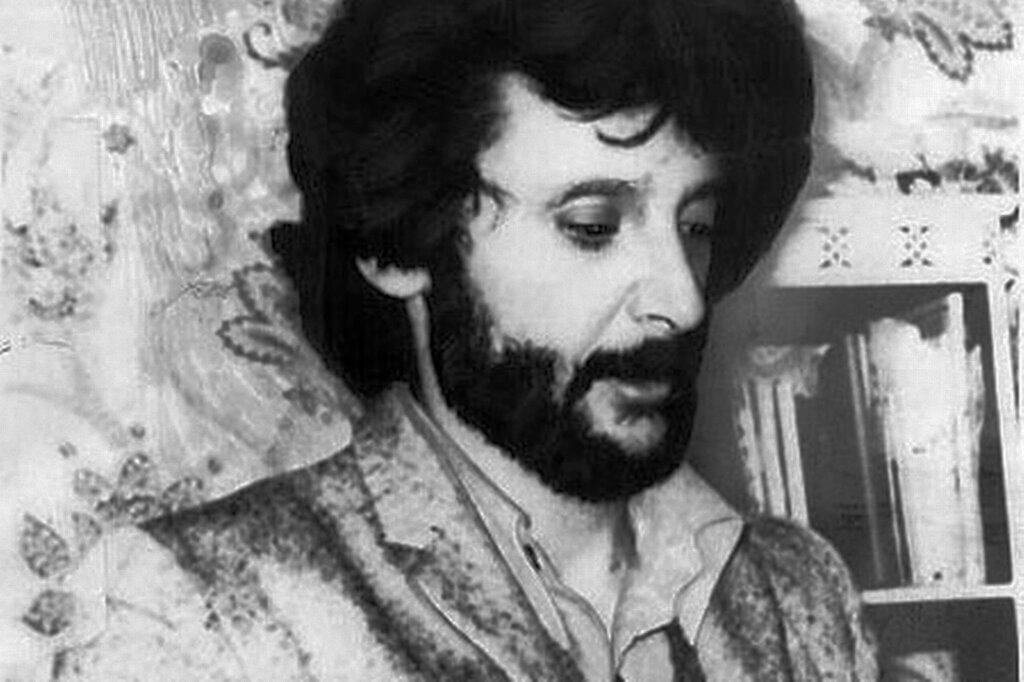
We take a moment to remember a teacher, campaigner and activist who died during an anti-racism riot at the hands of police.
In April 1979, the events of the general election were overshadowed by fighting between the police and the largely-Asian population of Southall near Heathrow in West London. In the middle of this struggle, one left-wing teacher Blair Peach was killed. The background to the events lay with the decision of the far-right National Front to hold an election meeting in Southall. The Front had almost no supporters in the area, but was hoping to gain publicity by bulldozing its way through the Asian districts of outer London.
Three years earlier a National Front-inspired gang had stabbed Gurdip Singh Chaggar in Southall. After the killing, Kingsley Read of the National Party was quoted as having remarked, ‘One down — a million to go’. Chaggar’s killers were never convicted. The failure of the state to take action gave the later events at Southall their edge. Prominent local anti-racist activist Balwindar Rana remembers reading about the NF meeting in the Ealing Gazette, ‘The news spread like wildfire. People felt very angry and insulted.’
On 18 April, residents met with the Home Secretary Merlyn Rees to ask him to ban the Front’s meeting. Rees declined. Instead, the Metropolitan police was instructed to keep the NF meeting open. On Sunday April 22, the day before the planned NF meeting, five thousand people marched to Ealing Town Hall to protest against the Front, handing in a petition signed by 10,000 residents. Local workplaces also agreed to strike in protest against the Front, including Ford Langley, SunBlest bakery, Walls pie factory and Quaker Oats.
Southall, April 1979
Monday April 23 was St. George’s Day. Local shops, factories and transport closed at 1pm, and people began to block the road from lunchtime.
By one or two o’clock, Balwindar Rana recalls, ‘There were young people milling around. A bus went past, with skinheads on, making v‑signs. Some of the young Asians started to fight the skinheads, and the police responded by fighting the Asians. Soon they were charging down the streets.’ One of the most frightening aspects Rana remembers was the noise of the police drumming their sticks against the riot shields.
By 3.30 in the afternoon, the entire town centre was closed, and the police declared it a ‘sterile’ area, meaning that it was free of anti-racists. Rain had begun to fall in buckets, further dampening the mood. Large numbers of people found themselves on the wrong side of police barricades. The tension rose, reaching its peak at around 6pm.
According to Rana, ‘The police used horses, they drove vans into the crowd, fast to push us back. They used snatch squads. People rushed back with bricks, or whatever they could pick up.’ The situation was now one of chaos. The links between the protesters had broken down. Individuals were running into the park to hide, or sheltering in local homes.
The police decided to close down the ‘Peoples Unite’ building, which anti-fascist demonstrators were using as their makeshift headquarters. Those inside were given ten minutes to leave. Police officers, formed up along the stairs, and beat people as they tried to escape. Tariq Ali was in the building, bleeding from his head. Clarence Baker, the pacifist manger of Misty and the Roots, was hurt so badly that he went into a coma.
The building itself was so badly damaged by the police action that afterwards, it had to be destroyed. Officers with batons smashed medical equipment, a sound system, printing and other items. Jack Dromey a full-time official of the Transport and General Workers’ Union, told a later inquiry, ‘I have never seen such unrestrained violence against demonstrators … The Special Patrol Group were just running wild.’ His view was echoed by Mrs. Dialo Sandu, a Southall resident who watched the riot from her garden, ‘They treated us like animals. It’s the first time I would ever speak against the police. But I saw what happened with my own eyes.’
At least three protesters suffered fractured skulls. Others were beaten until they lost consciousness. Caroline, then an active member of the Anti-Nazi League in Ealing, spent the night driving between Southall and Heathrow,
‘Many of the Asians kids that the police arrested, they beat them up for a bit, and then they took them out of London. They dropped them in the middle of nowhere, on the side of motorways, nowhere near telephones or anything. These young kids were confused, crying. The police just wanted to humiliate them.’
Perminder Dhillon describes her memories of the day. ‘Around ten, many of us gathered to watch the news at a restaurant where Rock Against Racism and Indian music had been blaring out all evening, drowning out the National Front speakers inside the town hall. Their words still bleeding, people saw the Commissioner of Police, the Home Secretary, and other “experts” on the black community condemning the people of Southall for their unprovoked attack on the police! As usual, only pictures of injured policemen were shown — nothing of the pregnant women being attacked and the countless other police assaults.’
Blair Peach, a schoolteacher and a member of the Anti-Nazi League, was clubbed to death as he sought to escape from the fighting. His death took place at around 8.30pm. He was killed on Beachcroft Avenue, a narrow suburban road. Peach had attempted to shelter from the police. His body was found towards the end of the road, on a corner that faced back towards the Town Hall. There was a bed of begonias growing at the opposite end of the road. The family opposite tried to shelter him, not realising that Blair was already dying. We know that an officer from the Special Patrol Group (SPG), the force that had stormed the People’s Unite building, hit him on the head. Anna’s daughter Miriam was attacked on the same road.
‘They were going home. The streets were covered in glass. Then they heard a siren. Someone shouted “run”. They ran into a side alley, then into this garden. They’d already seen what the SPG was up to. Six officers with truncheons got Miriam in a corner and hit her. She’d never known anything like that. When they stopped, they said, “We’ll be back for you later.” She had blood everywhere. One local Asian family took her in, and offered her sugary tea. Later she went to the St. John’s Ambulance. She still gets pains from where they hit her.’
In the aftermath of Southall, the papers swung overwhelmingly behind the police. The Daily Express, Daily Mail and Daily Telegraph all covered the story as their front-page lead. The headlines included, ‘BATTLE OF HATE. Election Riot: Police Hurt, 300 arrested’, ‘RACE RIOTERS BATTLE WITH POLICE ARMY’, ‘300 HELD IN RIOT AT NF DEMO’, and ‘300 ARRESTED AT POLL RIOT’. One edition of the Daily Mail went furthest in deliberately confusing the racists and the anti-racists, proclaiming, ‘RACE RIOTERS BATTLE WITH POLICE ARMY’. The press depicted a mix race group of young anti-racists as violent, aggressive thugs — as much a threat to society as the real criminals of the National Front.
Yet, in the days that followed, it slowly became clear that the police had gone too far. It became clear that the vast majority of Southall residents felt a great sympathy for Blair Peach, the man who had died for them. The Metropolitan Police’s victory crumbled. The murder of Blair Peach became a symbol of the unjustified use of police violence. Fifteen thousand people marched the following Saturday, in honour of Blair Peach, with Ken Gill speaking, from the TUC. Workers at SunBlest bakery raised £800 for Peach’s widow.
Balwindar Rana remembers that for the next week, protesters were everywhere, flyposting, speaking, organising, discussing the lessons of the police riot. The police were around, in very large numbers, but they did not dare to stop people from organising. It was almost as if the police were shamed by the enormity of what they had done.
Rock Against Racism brought out a special leaflet, Southall Kids are Innocent, ‘Southall is special. There have been police killings before … But on April 23rd the police behaved like never before … The police were trying to kill our people. They were trying to get even with our culture … What free speech needs martial law? What public meeting requires 5,000 people to keep the public out?’ Questions were asked in the New Zealand parliament.
For eight weeks, Peach’s body was left unburied, while people paid their respects. Queues formed outside the Dominion Theatre, where his body remained. According to one source, Peach’s death had ‘particular reverence for the predominantly Sikh Punjabi community, both as a white man who chose to assist them and thereby defend their right to reside in the country, and as an enemy of tyrannous oppressors whose struggles with the Sikhs are still talked of and remembered in popular bazaar calendar art.’
Am official inquest continued, limiting itself to the sole question of how Blair died. One distinguished pathologist Professor Mant commented on the damage done to Blair Peach’s skull, with an instrument that had not pierced his skin. He concluded that the murder weapon was probably not a truncheon, but more likely a cosh, or possibly a police radio.
Writing in the New Statesman, Paul Foot complained of the delays, ‘I wonder what the reaction would have been if a policeman, not a demonstrator, had been killed at Southall. Would the inquest have been postponed until the middle of the summer holidays? Would there have been almost total silence in the Press about the murder hunt? Would the suspects have been left to carry on their jobs without being charged or even cautioned?’
The friends and supporters of Blair Peach were not satisfied. ‘There was no justice for Blair’, remembers Anna, ‘We knew who’d done it.’ Two papers, the Sunday Times and the Leveller, published leaks naming the officers that had travelled in the van that held Peach’s killer. They were Police Constables Murray, White, Lake, Freestone, Scottow and Richardson. When the lockers of their unit were searched in June 1979, one officer Greville Bint was discovered to have in his lockers Nazi regalia, bayonets and leather covered sticks. Another constable Raymond White attempted to hide a cosh. No officer was ever prosecuted.
On 13 June 1979, Peach was buried. Ten thousand people joined the procession. Another ten thousand marched through Southall again in memory of Blair Peach the following year. A school was named after him and further memorials have been organised since.
